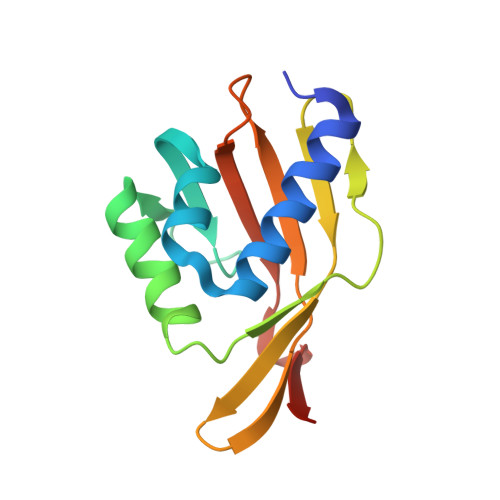Assessment of enzyme active site positioning and tests of catalytic mechanisms through X-ray-derived conformational ensembles.
Yabukarski, F., Biel, J.T., Pinney, M.M., Doukov, T., Powers, A.S., Fraser, J.S., Herschlag, D.(2020) Proc Natl Acad Sci U S A 117: 33204-33215
- PubMed: 33376217
- DOI: https://doi.org/10.1073/pnas.2011350117
- Primary Citation of Related Structures:
6TZD, 6U1Z, 6U4I, 6UBQ, 6UCN, 6UCW, 6UCY - PubMed Abstract:
How enzymes achieve their enormous rate enhancements remains a central question in biology, and our understanding to date has impacted drug development, influenced enzyme design, and deepened our appreciation of evolutionary processes. While enzymes position catalytic and reactant groups in active sites, physics requires that atoms undergo constant motion. Numerous proposals have invoked positioning or motions as central for enzyme function, but a scarcity of experimental data has limited our understanding of positioning and motion, their relative importance, and their changes through the enzyme's reaction cycle. To examine positioning and motions and test catalytic proposals, we collected "room temperature" X-ray crystallography data for Pseudomonas putida ketosteroid isomerase (KSI), and we obtained conformational ensembles for this and a homologous KSI from multiple PDB crystal structures. Ensemble analyses indicated limited change through KSI's reaction cycle. Active site positioning was on the 1- to 1.5-Å scale, and was not exceptional compared to noncatalytic groups. The KSI ensembles provided evidence against catalytic proposals invoking oxyanion hole geometric discrimination between the ground state and transition state or highly precise general base positioning. Instead, increasing or decreasing positioning of KSI's general base reduced catalysis, suggesting optimized Ångstrom-scale conformational heterogeneity that allows KSI to efficiently catalyze multiple reaction steps. Ensemble analyses of surrounding groups for WT and mutant KSIs provided insights into the forces and interactions that allow and limit active-site motions. Most generally, this ensemble perspective extends traditional structure-function relationships, providing the basis for a new era of "ensemble-function" interrogation of enzymes.
Organizational Affiliation:
Department of Biochemistry, Stanford University, Stanford, CA 94305; fyabukar@stanford.edu herschla@stanford.edu.
















